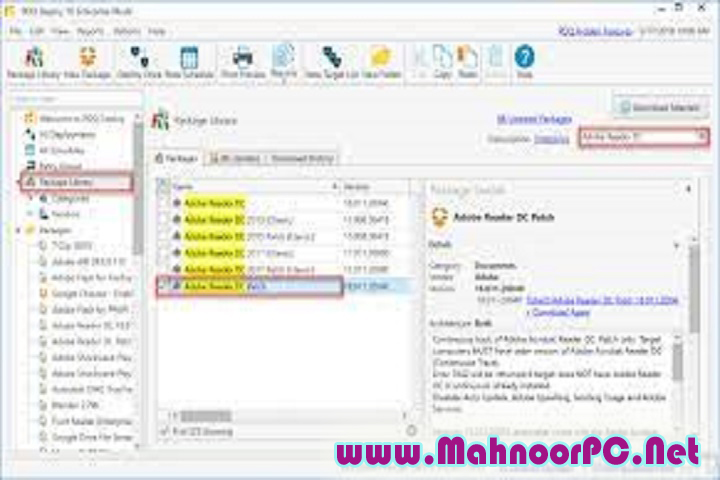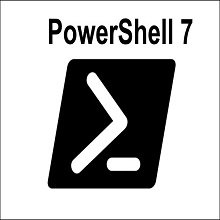PDQ Deploy 19.3.570.0 Introduction
PDQ Deploy 19.3.570.0 In the fast lane of IT Management, the efficient and effective deployment of software across systems is a challenge. PDQ Deploy 19.3.570.0 comes as a very powerful solution in easing deployment activities, delivering a low administrative overhead, and providing seamless software distribution. The paper elaborates extensively on the PDQ Deploy 19.3.570.0 by articulating on its introduction, description, overview, features, installation, and system requirements.

PDQ Deploy 19.3.570.0 Example
PDQ Deploy 19.3.570.0 is an all-in-one software deployment application designed and targeted at the IT administrator, allowing automated software installation over many Windows-based systems on the network. It builds further on the already solid state of its predecessors and doesn’t run short on improvements and new features that assure a better user experience for deploying.
Whether you’re running a small office or large enterprise, PDQ Deploy takes the complexities out of software distribution so all your systems are up-to-date with the latest applications and patches.
Overview
PDQ Deploy 19.3.570.0 is an easy-to-use interface and a collection of tools to automate your deployment process. It supports deployment of just about any application in many configurations, offering a great level of flexibility for the IT admin to build an installation tuned to his own liking. Its other core functionalities include high usability, reliability, and deep integration with other IT management software, like PDQ Inventory.
That are scheduled by administrators: they can keep an eye out for ongoing progress in real time and rest assured after receiving detailed reports regarding the status of each installation, thanks to PDQ Deploy.
You May Also Like :: Pazu Amazon Music Converter 1.9.1

Package Features
Automated Deployments
PDQ Deploy enables software deployments to be completely automated, thus greatly reducing the need for and risk of human errors through manual effort. Administrators can create deployment packages and schedule them, then the software does the rest of the work.
2. Deployment Packages That Can Be
Users using PDQ Deploy have the room to build custom deployment packages based on their work requirements. Ideally, they can set pre- and post-installation scripts, application configuration, and installation command-lines.
You May Also Like :: PassMark MemTest86 Pro 11.0

3. Real-time monitoring and reporting
The software provides real-time monitoring of deployment progress so as to provide a general view of where each installation stands. In this light, the software issues some of the most elaborate detailed reports with great insights into successful installations, failures, and issues experienced.
4. Integration with PDQ Inventory
Some of the many powerful features of PDQ Deploy involve native integration with PDQ Inventory. This allows targeting specific machines with a wide variety of criteria, both based on what software is or isn’t installed and through hardware configuration—with custom-defined collections also available should they be required.
5. Scheduling and Automation
It is also possible to schedule deployments for when systems are not being extensively used by end users. Recurring deployments can also be set up where systems are updated with new versions of software and patches.
6. Wide Variety of Available Deployment Packages
PDQ Deploy ships with a full library of pre-built deployment packages for common applications. Therefore, it also saves IT administrators a lot of time and effort from having to reinvent the wheel. The packages are constantly updated to include the new versions of the most popular software.
How Do You Install
Step 1: PDQ Deploy Download
Go to the PDQ Deploy official website and download the installation file of PDQ Deploy version 19.3.570.0. Of course, ensure that the right OS version of the installer is downloaded.
Step 2: Run the Installer
Find the downloaded installer file and double-click it to open. The installation wizard will guide you through the setup.
You May Also Like :: PC Cleaner Pro 9.6.0.8

Step 3: Accept Licence Agreement
Please read through the End User License Agreement (EULA) carefully and agree to continue with the installation process.
Step 4: Select Installation Destination
Select Destination Folder where PDQ Deploy should be installed. Generally, the default folder is good for most users.
Step 5: Installment
Now, click on the ‘Install’ button. The installer will copy down all necessary files for the application to your system and configure the software.
Step 6: Open PDQ Deploy
After installation, open PDQ Deploy with Start Menu or a desktop shortcut you created. It might ask for a license key if you purchased the professional version of this tool.
Step 7: Settings
Personalization: Set basic configuration items — repository path of deployment packages; integrating with PDQ Inventory, when used.
Step 8:
Deploy Deployment packages can now be created and the software can be deployed across a user’s network.
System Requirements
Before deploying PDQ Deploy 19.3.570.0 should be installed on a server, make sure your server has the
Operating System: Windows 7 SP1, 64-bit or later Windows Server 2008 R2 or later
Hardware Processor: 2 GHz Dual Core processor or better
RAM: 4GB minimum, 8GB
Hard Disk: 1 GB of available hard-disk space for installation; additional free space required for deployment Demoral It is crucial to have a reliable network connection for multi-system deployment of the software. Other Software .NET Framework 4.6.1 or
Download Link : HERE
Your File Password : MahnoorPC.Net
File Version & Size : 19.3.570.0 | 83.83 MB
File type : compressed/Zip & RAR (Use 7zip or WINRAR to unzip File)
Support OS : All Windows (64Bit)
Virus Status : 100% Safe Scanned By Avast Antivirus




